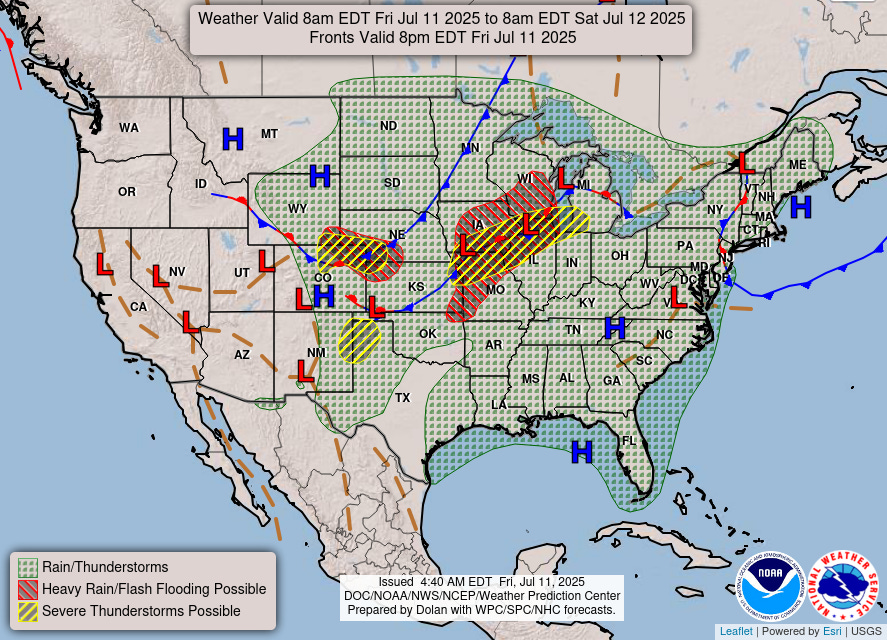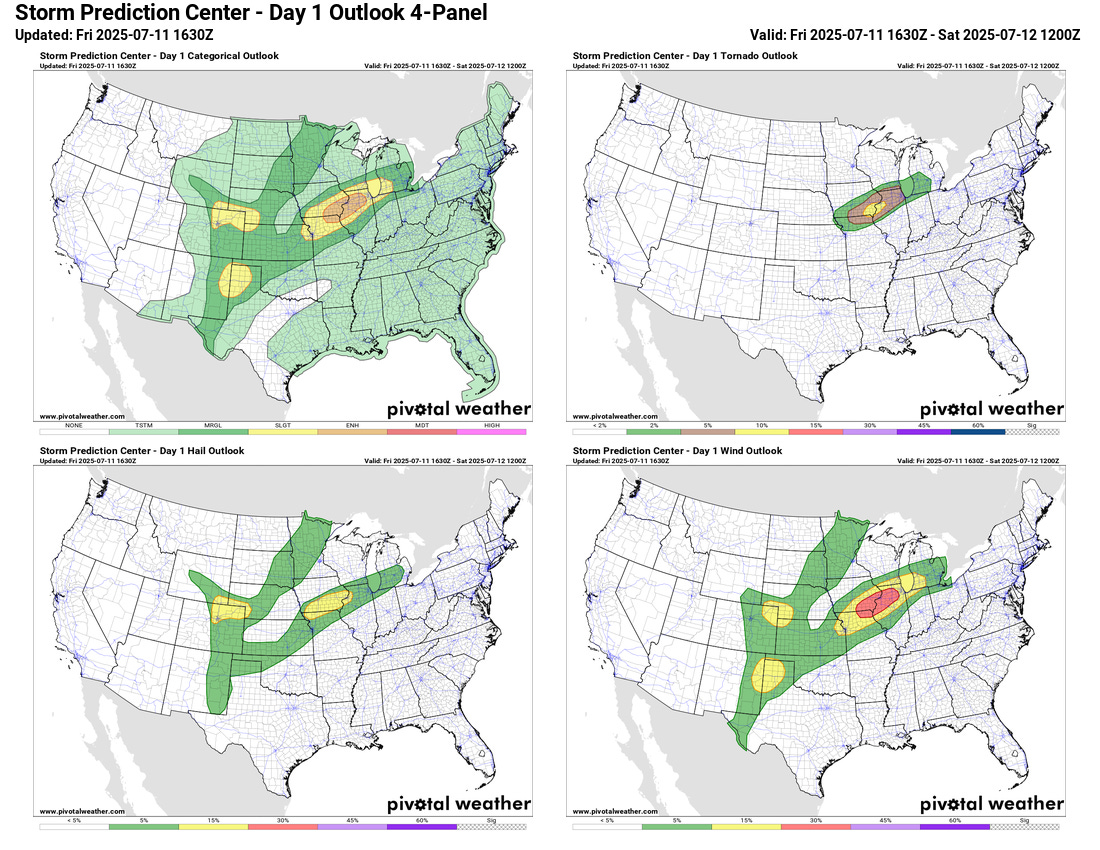NOAA budget news and more about emergency management in Texas flood
Flash flooding and severe weather risks heading into the weekend
Sorry for being later than I like with today’s newsletter, but the news cycle keeps bringing stories that I feel like need to be talked about. First, I want to discuss some news related to the NOAA budget. Yesterday, the Senate Appropriations Committee held their meeting to do the “markup” on the appropriations bill for Commerce, Justice and Science (CJS). The Appropriations Committee has a CJS subcommittee the develops the appropriations bill that funds the Department of Commerce, the Department of Justice, and the independent science agencies such as NASA and NSF. The meeting yesterday was for the full committee to debate the draft bill prepared by the subcommittee and (hopefully) vote on it and approve it.
This meeting was eagerly anticipated in the science community because it was seen as the first real opportunity to see how Congress might react to the Trump Administration’s FY2026 budget which contains massive cuts to science agencies. As this article highlights, the signals from the Appropriations Committee are positive, as their CJS bill appears to reject most of the administration’s proposed cuts to NASA and NSF and likely to NOAA as well. Unfortunately, though, we still do not know the details of the bill because the committee reached an impasse on a separate issue related to the proposed move of FBI Headquarters, and the bill was not approved and is in limbo at this point.
While it is obviously more encouraging than not for the science agencies that the Senate appears to be rejecting the bulk of the administration’s science cuts, this is still only a minor positive step. As one colleague noted in a discussion I am in about the NOAA budget, this is likely the most favorable looking budget proposal we will see. The House will likely be much closer to the administration’s proposed budget levels based on most signs.
More importantly, this bill is a long way from becoming law, and as long as the federal government is operating under the current budget bill or, even more concerningly, a potential continuing resolution after October 1st, the administration has a lot of freedom to implement cuts and agency reorganizations, especially given the recent Supreme Court ruling that the administration can move forward again with large scale reductions-in-force. Just in the last 24 hours, the administration announced plans to move forward with a reorganization of the State Department that will involve the layoffs of at least 1,300 federal employees. Obviously, we do not know how aggressively the administration might push forward with its plans for NOAA outlined in its FY26 proposed budget plan for the agency, but we will obviously be watching.
Another story I want to highlight this morning is that NBC News reported that records show that Kerr County, TX officials did not send any emergency messages related to the Guadalupe River flash flood on IPAWS, FEMA’s national system for local alerting through wireless phones, NOAA Weather Radio and the Emergency Alert System (EAS). This just further reinforces the points I made in last night’s post about the county’s apparent lack of robust warning receipt and dissemination procedures.
I strongly encourage you to read the excellent NBC News article, particularly for the insight and comments offered by Dr. Jeannette Sutton, one of the leading social science experts on alerting and warning. In my opinion, this is a crucial point from Dr. Sutton:
“There is no required training. There’s no certification process currently within IPAWS,” said Jeannette Sutton, an emergency alert researcher who explained it’s up to each local government to write its own policies. That methodology, she said, has created differences in how effectively the system is used in each community. “We need a lot of training, and we need the resources to help people to get trained,” said Sutton.
These points are so important and feed right into what I have been discussing about the administration’s plans to reduce or eliminate FEMA. While just this morning the Washington Post reported that the administration seems to be backtracking on eliminating FEMA, they clearly are pushing forward on their concept to reduce FEMA and push more emergency management (EM) responsibility to the states and local jurisdictions. I feel the need to be increasingly direct and somewhat repetitive: this makes absolutely no sense to me and I am afraid this plan will seriously damage emergency management in this country. The primary responsibility for EM is already at the state and local level. As Dr. Sutton said, with IPAWS we already have “differences in how effectively the system is used in each community.” Further reducing FEMA will only create more of these types of inequities across jurisdictions. We need to be looking for ways to ensure that vulnerable areas like the Guadalupe River are identified everywhere they exist and have standardized approaches to mitigate the associated risks. Diminishing and marginalizing the federal agency that could potentially do this work at a national level seems incredibly short-sighted and counterproductive.
Turning to today’s weather, the most focused risks for severe weather and flash flooding will be across parts of the central United States, where a strengthening upper level disturbance and associated cold front will lead to scattered to numerous strong to severe thunderstorms with heavy rainfall across the region.
The greatest risk of severe storms looks to be in parts of the mid to upper Mississippi Valley, where a low pressure system moving along a stationary portion of the front will focus severe thunderstorm activity this afternoon and evening, with the potential for tornadoes and widespread damaging winds. An enhanced (level 3 of 5) risk of severe storms is in place in this region. Additional severe storms are possible across other parts of the central US, particularly in portions of the High Plains where upslope flow could focus more organized severe storm activity.
For this weekend, much of the focus will be on flash flooding once again, as abnormally high levels of moisture will continue across much of the southern and eastern United States. Of particular concern for the weekend will be the Southern Plains which has seen an unusually wet last 60 to 90 days, and where several waves of storms with intense rainfall rates are likely this weekend. On Sunday the Weather Prediction Center also has a slight (level 2 of 4) risk of flash flooding for the northern Appalachians, another area that has been unusually wet and has seen impactful episodes of flash flooding over the last several weeks.






